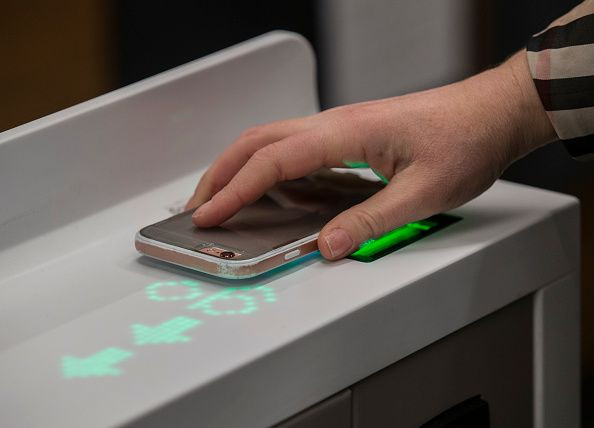Could This Technology Make Amazon Go Stores Obsolete?

Amazon.com (NASDAQ:AMZN) is revolutionizing how we shop with its cashierless Amazon Go convenience stores, and hopes to expand the concept from fewer than 10 now into a network of 3,000 stores in only two years.
There may be logistical issues in building out so many stores in such a short time, as well as political ones if states decide all stores must accept cash. But the biggest challenge may be competing technology that allows more retailers to offer their own no-cashier, no-checkout shopping. It could make the Amazon Go chain obsolete.
The dawn of smart carts
Amazon Go's "just walk out" shopping experience requires a store to be outfitted with machine vision, deep-learning algorithms, and an array of cameras and sensors to watch a customer's every move. It knows what every item is, and when it's been picked up and put back, so it can charge a shopper's account. A start-up called Caper is offering similar technology that is more accessible to more retailers.
Rather than outfit an entire store with such advanced artificial intelligence (AI), Caper puts it into individual shopping carts. It lets supermarkets more easily compete against Amazon without the massive cost necessary to build new stores or retrofit a chain's existing infrastructure.
Shoppers put items into AI-powered carts, which identify the products and ring up the total. Interactive screens on the carts not only keep a running tally of the order, but can also direct shoppers to in-store specials.
The technology used by Caper's partners does currently require customers to scan each item into the shopping cart screens, but they're using it to train the deep learning algorithm to enable shopping without scanning.
When they are finished shopping, customers can pay via the screen and leave. While bagging up a week's worth of groceries could slow you down, this system seems likely to encourage shoppers to bring their own bags into the store and fill them up as they go. That's often how the scan-and-go technologies work so you're not stuck at the register still having to bag all your items.
Amazon Go's limitations
The original Amazon Go location was only 1,800 square feet, about the size of a convenience store, but it was estimated to cost at least $1 million to install all the cameras and sensors. Analysts estimate that to build out 3,000 stores would cost some $3 billion.
While Amazon is testing a range of store sizes, some as large as 2,400 square feet, it's clear the concept is prohibitively expensive to apply to something on the order of a full-sized supermarket and is why they're mostly stocked with convenience items that you can literally grab-and-go.
A Walmart store can run anywhere from 30,000 square feet to over 200,000 for one of its supercenters. Even Amazon's Whole Foods Markets average 40,000 square feet. Retrofitting one of these locations would also seem to be nearly impossible since all-new shelving and displays would be needed to incorporate the cameras and sensors.
Many grocery chains like Kroger have added so-called scan-and-go capabilities, where customers use a scanning gun or their smartphones to scan in each item they buy, and then upload the data to a register at checkout. But it's a clunkier system than Amazon's effortless grab-and-go technology; Walmart killed off its own scan-and-go system because it said shoppers weren't using it.
Scaling up artificial intelligence
Caper says its cart technology is currently in place at two grocery store chains, with plans to roll it out to 150 more this year. The company's website lists six retail partners from the New York area including C-Town, Key Food, and Pioneer supermarkets. It says its shopping carts have increased the value of the average basket by 18% because customers are exposed to products they might otherwise miss or can't find.
Amazon Go is certainly poised to upend the convenience store industry with its advanced AI wizardry. But Caper could revolutionize the much broader and larger supermarket sector and make Amazon's stores obsolete by bringing the same sort of technology to your neighborhood grocery store in a package that's far more scalable.
This article originally appeared in the Motley Fool.
John Mackey, CEO of Whole Foods Market, an Amazon subsidiary, is a member of The Motley Fool's board of directors. Rich Duprey has no position in any of the stocks mentioned. The Motley Fool owns shares of and recommends Amazon. The Motley Fool has a disclosure policy.





















